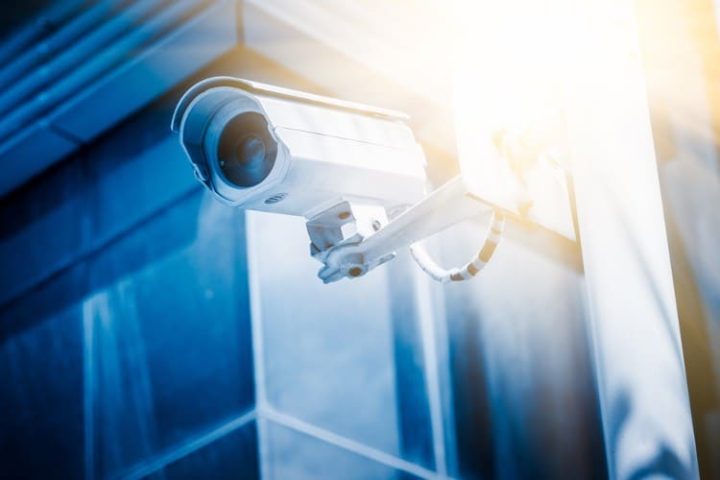
SINGAPORE — Chinese technologies and tactics to deal with internet use and dissent are widening to countries along its Digital Silk Road, based on reports made by Cambodian activists to the Thomson Reuters Foundation (TRF).
These activists have complained that they are under constant surveillance by Chinese-supplied technology in the form of digital surveillance packages. Take, for instance, a case of people protesting job losses at the Hong Kong-listed NagaWorld casino in Phnom Penh, Cambodia’s capital. As protestors spoke out, drones lingered around them. These drones flew low and close to the hundreds of people who were shouting slogans protesting the layoffs of the nearly 400 employees who were laid off last year.
Activists claim that these Chinese technologies were used without any public consultation or legal framework. Moreover, these activists assert that these technologies, including AI (Artificial Intelligence) facial recognition, were used for targeting Uyghurs in smart city projects in China.
“We knew we were being recorded, but we couldn’t do anything, so we would wave at the drones,” said Chhim Sithar, 34, a union leader who was arrested at the protest together with several others, and imprisoned for nine weeks.
Sithar and other Cambodian rights activists claim they are under unceasing surveillance, with their every online and offline move monitored by drones, cameras, and software.
Yet these activists’ claims were contested by Cambodian government spokesman Phay Siphan, who dismissed concerns that the technologies were employed to monitor activists and union leaders.
“The CCTVs and other surveillance infrastructure are for security purposes, to fight crime, and traffic violations and other illegal actions,” Siphan declared.
To add to activists’ woes, Hong Kong-listed NagaCorp alleged that the strike that started in December was illegal, and that employee layoffs were a “mutual separation plan” to reduce costs during the Covid-19 crisis.
Municipal police in Phnom Penh have also claimed that the workers’ strike was illegal and a hazard to safety and public order. Subsequently, police charged some protesters with “incitement to cause serious chaos to social security.”
Although Cambodian authorities have advocated for surveillance for security reasons, various human-rights groups have sounded the alarm about privacy incursions and the possibility of state-supported discrimination and profiling. This is because the surveillance technologies are typically used without strong data-protection laws in the country.
China’s Belt and Road Initiative
The Digital Silk Road project forms part of China’s larger Belt and Road Initiative (BRI) to elevate the communist country’s international status via large-scale aid, infrastructure projects, and political support. The Digital Silk Road’s purported aims are to enhance recipients’ surveillance, telecommunications networks, e-commerce, smart cities, and to help Chinese companies export their technologies to recipient countries, as stated by the globalist Council of Foreign Relations. Under this project, China sells sizable digital surveillance packages to recipient governments.
What this means is that recipient countries involved in the BRI are employing technologies such as AI-based facial-recognition systems for smart policing or smart cities programs. Activists have said that these technologies have been associated with the ill-treatment of minority Uyghurs in China.
“These tools offer new possibilities for tracking and intimidating dissenters, monitoring political opponents, and preempting challenges to the government,” admitted Steven Feldstein, a senior fellow at the Carnegie Endowment for International Peace (CEIP), a think-tank based in Washington, D.C.
“In authoritarian settings, these capabilities have obvious potential to deepen repression,” elaborated Feldstein, who estimates that Chinese AI surveillance technologies are being deployed in more than 50 BRI countries.
China has installed more than 1,000 CCTV cameras alone in Phnom Penh under Cambodia’s new nationwide surveillance system, based on local media reports.
In response to activists’ allegations, Chinese authorities have said that their technological surveillance has been crucial in dealing with crime and preventing the spread of Covid-19. What is more, the communist state has denied reports that it is using technology to facilitate the abuse of Uyghurs.
As Cambodian authorities are constructing a national internet gateway — akin to China’s internet firewall that bans some websites and social media platforms — Chak Sopheap from the Cambodian Center for Human Rights asserted that there is little transparency around these internet systems.
“The government has disclosed no information as to the data gathered, and how they are used by the authorities. This lack of transparency is highly problematic,” she lamented.
“The use of such technologies affects the right to privacy of people, especially those who do not support the government, and provides Cambodian authorities with an additional tool to crack down on critical voices and dissidents.”
Meanwhile, Chhim Sithar and her fellow protesters are adjusting their activities to go around surveillance systems. For instance, Sithar and others conduct more in-person meetings, where they switch their phones off. Additionally, they use virtual private networks (VPNs), encrypted chat groups, and avoid posting on social media.
“This feeling of being watched and tracked all the time is exhausting,” she said.
“We cannot do anything without the police knowing — it’s scary.”
China’s Pervasive Influence
The pervasiveness of China’s technology and surveillance can be seen in Chinese technology firms constructing data centers, submarine internet cables, and mobile towers. Besides, other nations have begun to imitate Chinese cyber laws and internet gateways to restrict information and data flow, according to a study by the Alliance to Secure Democracy (ASD), a U.S.-based think-tank.
“There is a risk that the Chinese state may be able to amass data — whether it’s genetic surveillance information or more traditional information about political opinions or activity through these systems,” warned Lindsay Gorman, a senior fellow for emerging technologies at ASD.
“There is a real question about where the data that fuels these surveillance systems is stored, who owns it and who benefits from it,” Gorman added.
Myanmar’s Military Adopting Chinese-style Surveillance
Similarly, in nearby Myanmar, Chinese firms are using facial-recognition systems as well as 4G and 5G networks in various cities amid military crackdowns on protests when they toppled an elected government in 2021.
The junta in Myanmar has implemented cyber laws that resemble China’s — such as controlling internet access to some websites, and outlawing social-media platforms such as Facebook and Twitter.
Officials from the junta have previously alleged that Chinese-supplied facial-recognition systems are required to ensure “civil peace.”
However, closed-circuit television (CCTV) and facial-recognition systems have made citizens, such as a lawyer who goes by the pseudonym of Hsu for fear of being targeted, “more afraid.”
“The police submit CCTV records as evidence in the court, so we know it is dangerous for the activists,” said Hsu. “When I went to prison to meet with jailed activists, I would wear a mask — not because I was scared of COVID-19, but because I wanted to hide my face.”



